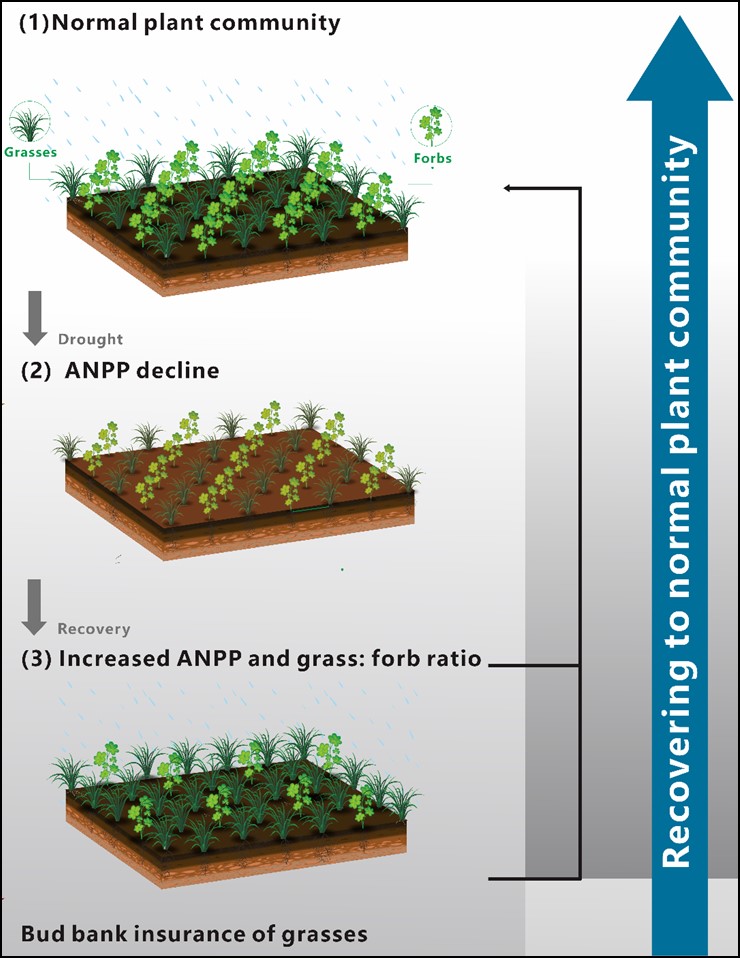Bud Banks Confer the Rapid Grassland Recover Following Extreme Drought
Global climate change is expected to increase rainfall variability, potentially increasing the frequency of extreme droughts during this century. Intensified drought will impact ecosystem functioning, with many ecosystems expected to experience a reduction in primary productivity. Understanding the magnitude of these impacts is especially important in grassland ecosystems as they are particularly sensitive to precipitation variability. The effects of extreme drought on plant community structure and function not only exist during extreme drought events, but also may produce legacy effects that continue to affect grassland ecosystem function and its response to environmental changes. Thus, better understanding the mechanisms of recovery is critical for predicting the future dynamics of terrestrial ecosystems. However, the underlying mechanisms of drought recovery remain understudied.
To address this knowledge gap, a research team from the Institute of Applied Ecology of the Chinese Academy of Sciences conducted a four years extreme drought followed by three years recovery and explored the impact of the effects of drought and recovery on aboveground net primary productivity (ANPP) in a grassland of northern China. Surprisingly, the researchers found that ANPP in the drought-plots recovered to the level of control-plots within a year after extreme drought.
Researchers further explored the mechanisms maintaining the recovery of ANPP after extreme drought based on the dynamics of belowground bud banks. Long-term drought reduced the ANPP of grasses and forbs as well as the total ANPP, which alleviated the pressure of resource competition and released a certain niches. The belowground bud bank of grasses was well stocked and quickly tilled after drought, which effectively supplemented the aboveground population, occupied the ecological niche space, and promoted the grass recovery.
On the contrary, the bud banks of forbs did not recovery after extreme drought. The aboveground population was insufficient and regeneration was limited, which led to the decline of forb ANPP during recovery period. These results would be helpful to accurately understand the mechanisms underlying the drought effects on grassland structure and function in the northern China.
Relevant results have been published in Journal of Ecology “Compensatory dynamics drive grassland recovery from drought” .

Fig.1 The responses of grassland to drought and recovery (Image by LUO Wentao).
YUE Qian
Institute of Applied Ecology, Chinese Academy of Sciences
Tel: 86-24-83970317
E-mail: yueqian@iae.ac.cn
Web: http://english.iae.cas.cn



